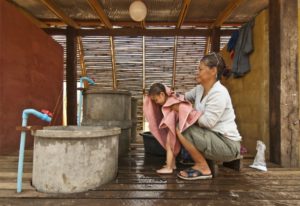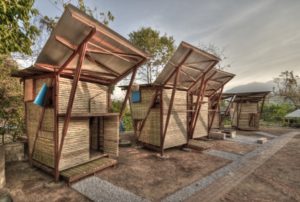Founded in 2005, the Music Kitchen—whose motto is “Food for the Soul”—has been serving the homeless by providing what founder Kelly Hall-Tompkins calls “spiritual, uplifting help.” According to Hall-Tompkins, homeless populations are not “musically underserved,” they are “non-served.”
Over the past eleven years, NYC homeless persons have been treated to concerts at the men’s shelter at Holy Trinity Lutheran Church and the Antonio G. Olivieri Drop-in Center for homeless women (both in Manhattan). Hall-Tompkins has also organized and performed Music Kitchen concerts at the Holy Apostle Soup Kitchen, the largest soup kitchen in New York City, serving 1200 meals everyday. Because of the venue, musicians play while the hungry come and go during the performances. As Hall-Tompkins says: “At any one time, I’m estimating that there are about 700-800 people who pass through listening to our concerts. It is terrific that we can share music with so many people…”
The shelter residents are asked to write down their thoughts about the concerts on index cards.
One person wrote: “I loved the singing. It was inspirational. And the singing keeps my hope and faith alive.”
Another wrote: “Please come back when you have the time.”
Yet another wrote: EVER SiNCE MY PARENTS passed, I can’t gEt my life together. BASKETball AND MUSIC has helped ME, but I still don’t KNOW where MY life is going. THANK YOU!
Importantly, The Music Kitchen serves not only those passing through the shelters, but also the musicians serving that population. As violist Brett Deubner said: “When we go there and play from our hearts, there’s a therapeutic back-and-forth for both the listener and performer. Both are being fed.” Albrecht Mayer, principal oboist for the Berlin Philharmonic, said: “Music feeds our soul and I’d wish that there would be many more places like Music Kitchen where musicians can offer their art to people in need of comfort and encouragement and, in return, get a unique feeling of what it means to share the sensation of music. The intense interaction of giving and receiving has been a very special experience for me and has moved me deeply.”
Aside from concerts being “delivered” to/for those at the shelters, there have been a few instances were homeless persons have participated. At one particular Music Kitchen concert, a program was performed by the Bach Vesper vocal soloists (singers who specialize in Renaissance and Baroque cantatas, motets, etc.). At this concert, Hall-Tompkins asked the audience if anyone had questions for the singers. The first question was “Can I sing, too?” As Hall-Tompkins states:
I often think to myself when people ask this: Is this going to work? Here was period (Renaissance/Baroque motets) music being sung in German. So, I thought: No way. This is not going to work. But I was wrong. And it really made me think that it doesn’t really matter what music it is, or what people’s prior experience has been, people gravitate towards all music. This young man, in his early 20s, did not have any prior “formal” experience with making music, and he certainly did not have any experience speaking German or reading music fluently, but he just looked over the director’s shoulder and did his best on one song, and sat down when finished. And he felt really good about himself. And satisfied. It was truly amazing that he felt so much a part of the concert experience that he had the desire to be even more connected to the music in this way.
In addition to this kind of participatory music making, Hall-Tompkins finds that music listening has a lasting, therapeutic component.
The mission of the Music Kitchen:
To bring top emerging and established professional musicians together in order to share the inspirational, therapeutic, and uplifting power of music with New York City’s disenfranchised homeless shelter population. I believe a shelter exists to provide not only physical but emotional and spiritual support to those who, for whatever reason, have lost the foundation of their homes and communities. I believe that music reaches the core of our being and can play a vital role in nourishing hope, love and strength, particularly when performed at an extremely high artistic level and in a friendly, relaxed setting.
More recently, the Music Kitchen has expanded its reach. It opened a new series in Los Angeles on December 4, 2014. The Los Angeles Branch of the Music Kitchen is presented in partnership with LAHSA, Los Angeles Homeless Services Authority.

